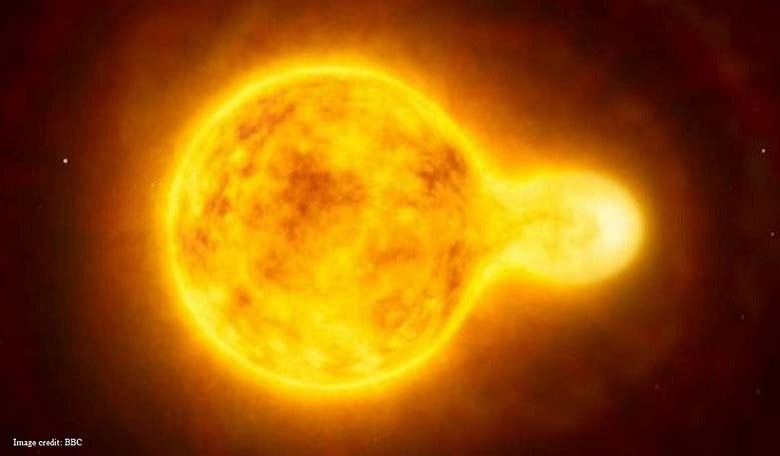Do five suns in the sky sound like a bit too much? Not as far as a rare star system recently found in Ursa Major goes.
The discovery of a peculiar quintuplet of closely linked stars orbiting around a single centre of gravity has put Earth’s pop culture “to shame,” Dr. Marcus Lohr told the BBC.
Dr. Lohr, one of the co-authors of a report on the unusual system at the UK National Astronomy Meeting, was of course referencing the iconic binary sunset scene from Star Wars:
According to a statement made by Dr. Lohr, any potential planets within the system would feature a radically different concept of night than we do here on Earth:
“Days would have dramatically varying light levels as the different stars were eclipsed. They would though miss out on night for a large part of their ‘year’, only experiencing darkness (and a night sky) when the stars were on the same side of their world.”
The formation of the actual system is as follows: There are two binary stars (a star binary is a system of two stars orbiting around a common centre of mass). One of the binaries also features a so-called contact binary, i.e. a kind of “lone companion.”
According to Dr. Lohr, this unusual star system likely exists due to the fact that all of the stars were formed from the same proto-stellar disk.
Proto-stellar disks are created when stellar nurseries collapse gravitationally, giving rise to both stars and planets over the course of time. The origins of our understanding of proto-stellar disks go all the way back to 1755, when Immanuel Kant published what came to be known as his nebular hypothesis as part of his Universal Natural History and Theory of the Heavens. The nebular hypothesis aimed to explain the formation of our own solar system and it became the most accepted model for the understanding of the creation of our system and star systems in general.
Although we’ve spent hundreds of years trying to understand how our own system – and, as we pursued greater understanding of space, other systems – came to be, there is still a fair bit of mystery surrounding the workings of proto-stellar disks and the complex processes that occur within them.
For example, we’re still not 100% sure how binary stars occur – let alone complicated, five-star systems.
It is widely estimated that half of all stars that are similar to our own Sun are part of binary or multiple star systems (more conservative analyses sometimes put the figure at a third). A popular theory says that fragmentations of the proto-stellar disk are the reason.
What gravitational conditions lead to such fragmentation we do not yet know.











